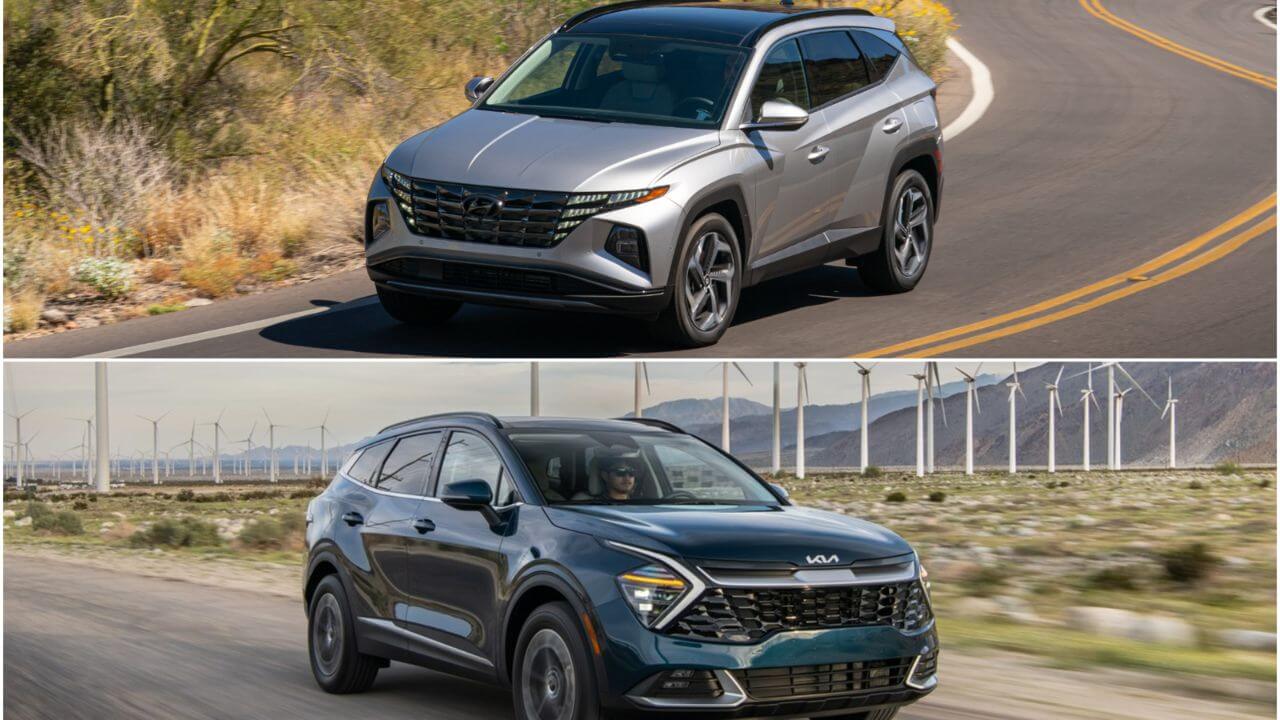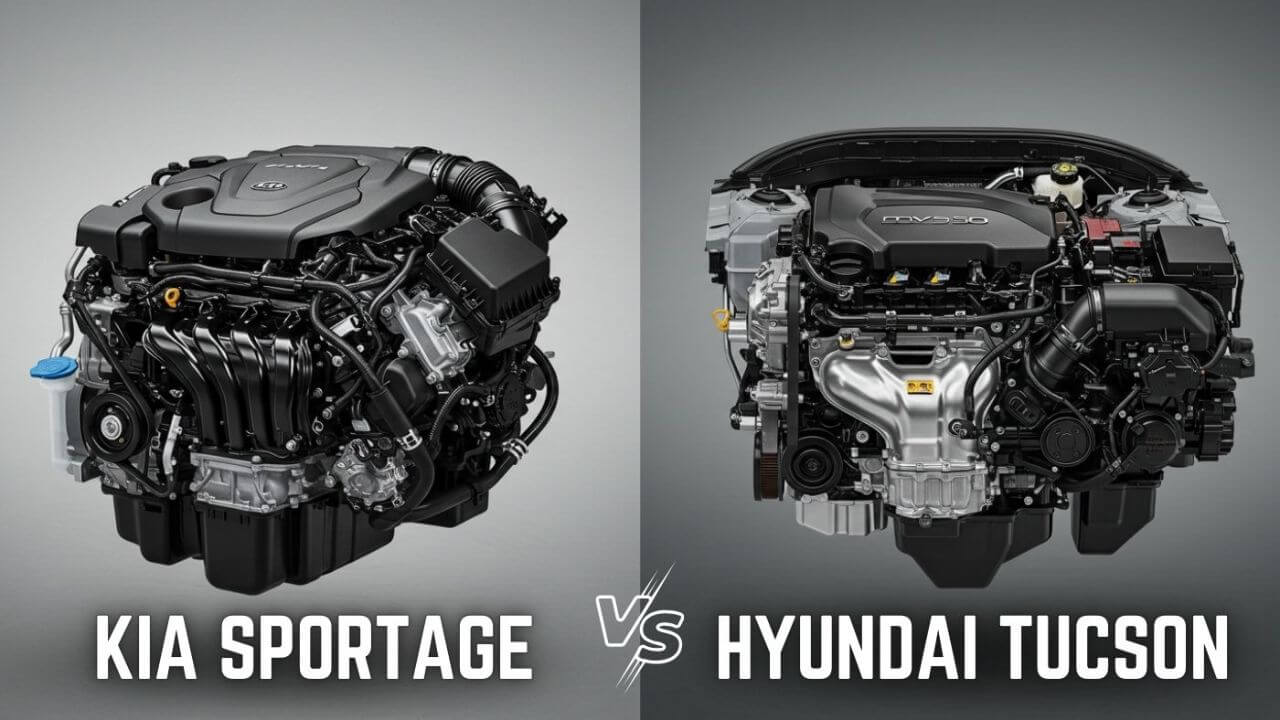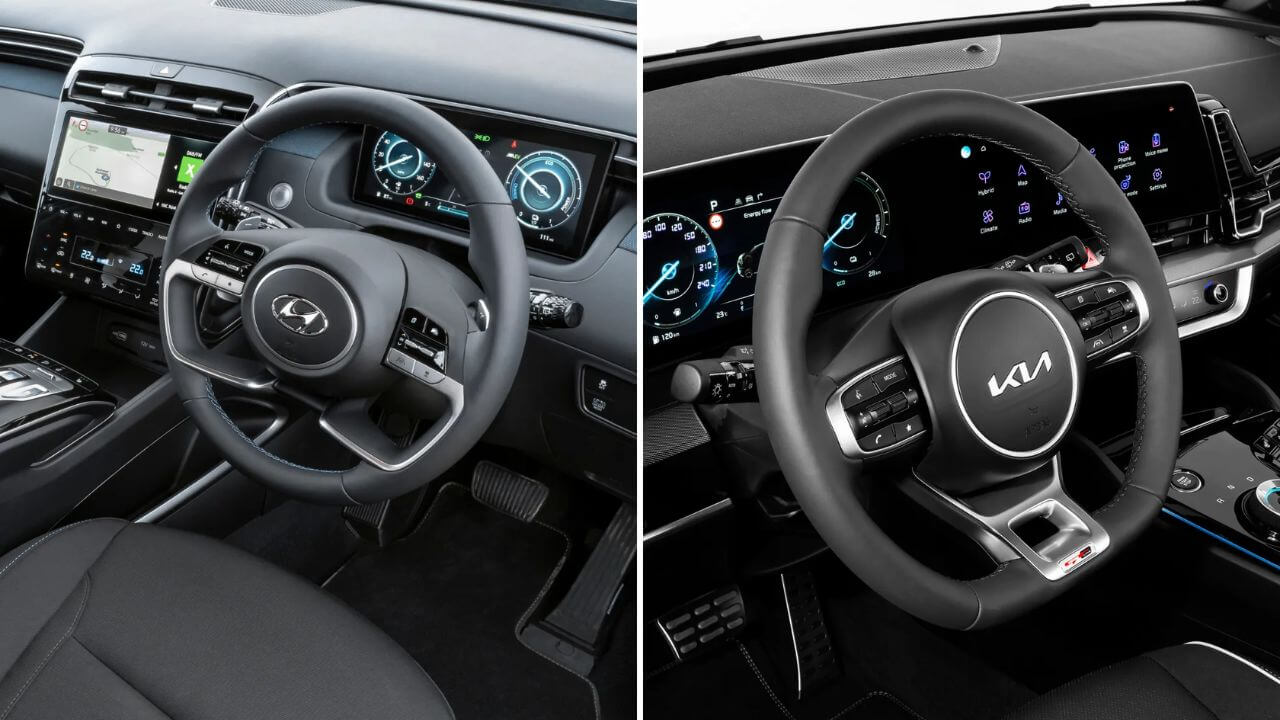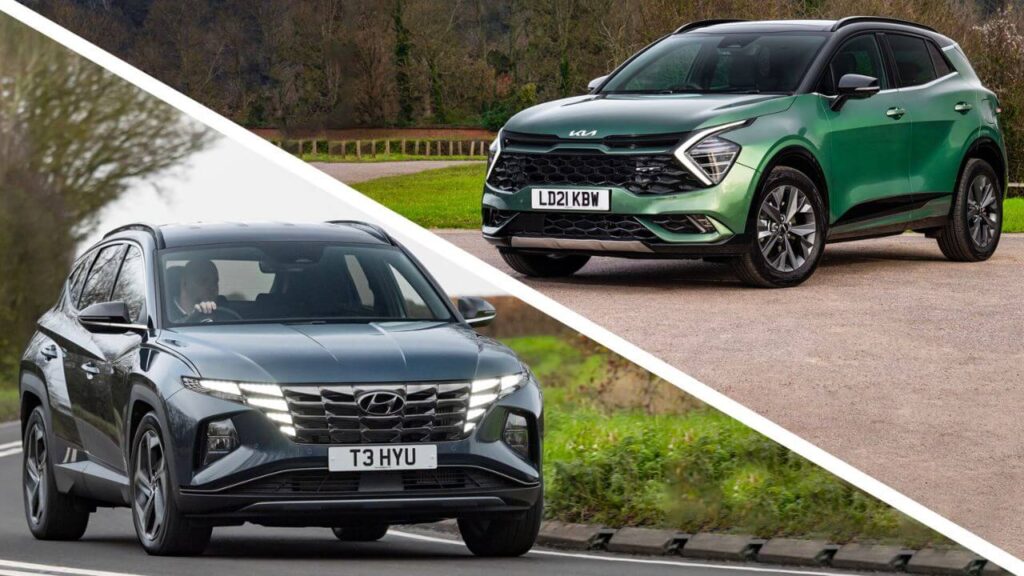Read the complete 2025 Kia Sportage vs Hyundai Tucson comparison guide, discussing engine specs, interior design, performance, and technology to help you decide which compact SUV is the best fit.
When it comes to compact SUVs that seamlessly blend style, performance, and technology, the Kia Sportage vs Hyundai Tucson rivalry is as engaging as it is thrilling. Both brands have established reputations for reliability, innovation, and comfort, making them popular choices for city commuters and families alike. As the 21st century approaches, the battle continues with updated designs, improved powertrains and redefined cabins for the 2025 model year. In this in-depth blog, we will explore this rivalry in great detail, providing an insider’s perspective on the differences between the two SUVs, including engine specifications, interior design, and prominent features that may help potential buyers make an informed choice about which SUV best suits their lifestyle.
Meet the Opponents: Kia Sportage vs Hyundai Tucson

A car design expert, James Mills, states, “These two have similar engineering roots, but they diverge in how they feel to drive and feel to occupy, which are ultimately critical to the different needs of the SUV buyers.”
Engine specs: Powertrain specifications

| Specification | Kia Sportage 2025 | Hyundai Tucson 2025 |
|---|---|---|
| Engine Type | 2.5 L Inline 4 Cylinder Gasoline | 2.5 L Inline 4 Cylinder Gasoline |
| Horsepower (Gasoline Engine) | 187 hp | 187 hp |
| Torque (Gasoline Engine) | 178 lb-ft | 178 lb-ft |
| Transmission (Gasoline Engine) | 8-speed automatic | 8-speed semi-automatic |
| Drivetrain (Gasoline Engine) | Front-Wheel Drive (FWD) or All-Wheel Drive (AWD) available | AWD or FWD available |
| Hybrid Engine | 1.6 L Turbocharged Hybrid with Electric Motor | 1.6 L Turbocharged Hybrid with Electric Motor |
| Combined Horsepower (Hybrid) | 227 hp | 226 hp |
| Combined Torque (Hybrid) | 350 Nm (approximately 258 lb-ft) | Estimated 264 lb-ft |
| Transmission (Hybrid) | 6-speed dual-clutch automatic | 6-speed automatic |
| Drivetrain (Hybrid) | AWD available | AWD available |
| Plug-in Hybrid Variant (PHEV) | Up to 261 hp combined | Up to 268 hp combined |
| Battery Electric Range (PHEV) | About 32 miles | Up to 32 miles |
| Transmission (PHEV) | Fully automatic 6-speed dual clutch | 6-speed automatic |
| Drivetrain (PHEV) | AWD | AWD |
Both SUVs have competitive power plants for the different driver preferences. Both of the hybrid setups are power and efficiency compromises, and the plug-in hybrids provide eco-friendly options along with practical electric-only mileage for daily commuting. The gasoline engines are good performers for drivers who may not need electrification.
Interior Design and Comfort Facilities

On the other hand, the Hyundai Tucson prioritizes a sleek minimalism paired with a sense of spaciousness. It has a well-equipped interior with an available H-Tex leatherette or genuine leather upholstery, dual-zone climate control and a 12.3-inch touchscreen with an available 12.3-inch digital instrument cluster. The Tucson also features a panoramic sunroof, configurable ambient lighting and a thoughtful ergonomic design for optimal passenger comfort and usability.
Both models seat five passengers comfortably with flexible cargo space thanks to split folding rear seats, although the Sportage has the edge in rear cargo space behind the second row, while the Tucson has the best possible cargo space when the seats are folded down. Storage pockets, door bins, and the use of technological elements like wireless car charging, 360-degree cameras, and advanced connectivity options like Apple CarPlay and Android Auto further enhance the cabin functionality on both SUVs.
Driving Experience vs Performance Comparison

The suspension in the Tucson, meanwhile, is tuned for comfort, whether cruising or navigating bumps and road irregularities. This is a feature that appeals more to drivers who prefer a relaxed and quiet ride. Tucson’s hybrid models also provide more seamless integration between the electric motor and gasoline engine, resulting in a smoother acceleration experience without any sudden transitions.
Performance is very similar as well, with a 0-60 mph time of 6.8 and 7.1 seconds, respectively, for the Tucson and Sportage, respectively, while the Tucson is a little faster, in practice the difference is very small and is hardly noticeable in most driving conditions. Both SUVs offer capable braking performance, well-tuned steering responsiveness, and advanced safety features like lane-keep assist, blind-spot detection, and autonomous emergency braking.
Technology & Safety Features
Both vehicles are equipped with cutting-edge technology and safety features that meet the expectations of today’s consumers. Typical features include touchscreen infotainment systems that include smartphone connectivity, Bluetooth, USB ports, voice recognition, high-end audio systems.
Safety equipment is complete; multiple airbags (six or more), electronic stability control, anti-lock brakes, hill start assist, traction control. In addition, driver assistance features such as lane departure warning, lane-keep assist and blind spot monitoring are offered or standard on mid to high trims.
The Sportage features other refinements, including an electronic parking brake with an auto hold option, remote engine starting and optional rear-seat entertainment systems. Hyundai’s Tucson then responds with a heads-up display and richer digital instrument cluster experience.
Fuel Efficiency and Environmental Impact
In today’s market, fuel economy and environmental impact are key. Both the hybrid and plug-in hybrid models of SUVs help reduce emissions and increase miles per gallon. Fuel economy tests show combined mileage of from about 26 to 38 m.p.g., depending on drivetrain and driving conditions. The plug-in hybrid models have an all-electric range that’s up to 32 miles, making it possible to commute short distances without needing to use any gasoline.
This focus on ecology is connected with greater consumer awareness and regulatory pressures for lower carbon footprints. For buyers who seek sustainable options without compromising on practicality, these models are a gift.
Results: Which One Is the Right Choice?
As we embark on a journey through the Kia Sportage vs Hyundai Tucson landscape for 2025, it’s evident that both SUVs are exceptional in value, quality, and versatility. The Sportage is designed for those who prefer a sportier appearance and a more involving driving experience, with a high tech driver focused interior. Meanwhile, the Tucson is more focused on buyers looking for a more comfortable, refined ride with a spacious, elegant interior and high-end technology features.
Both SUVs come with similar powerful and efficient engine options, competitive safety features, and advanced infotainment systems, so no sacrifice on the basics is required.
Ultimately, the choice between the two is really a personal one based on preferences in design, driving dynamics, and interior atmosphere. As automotive specialist James Mills succinctly puts it: “The difference between these siblings is less about deficiencies than it is about matching the car’s character to your rhythm and driving desires on a daily basis.”
As we look ahead to 2025, the Kia Sportage vs Hyundai Tucson showdown becomes less about who takes the prize and more about whose SUV best fits a lifestyle that values innovation, comfort, and road manners in subtly different yet equally exciting ways.

